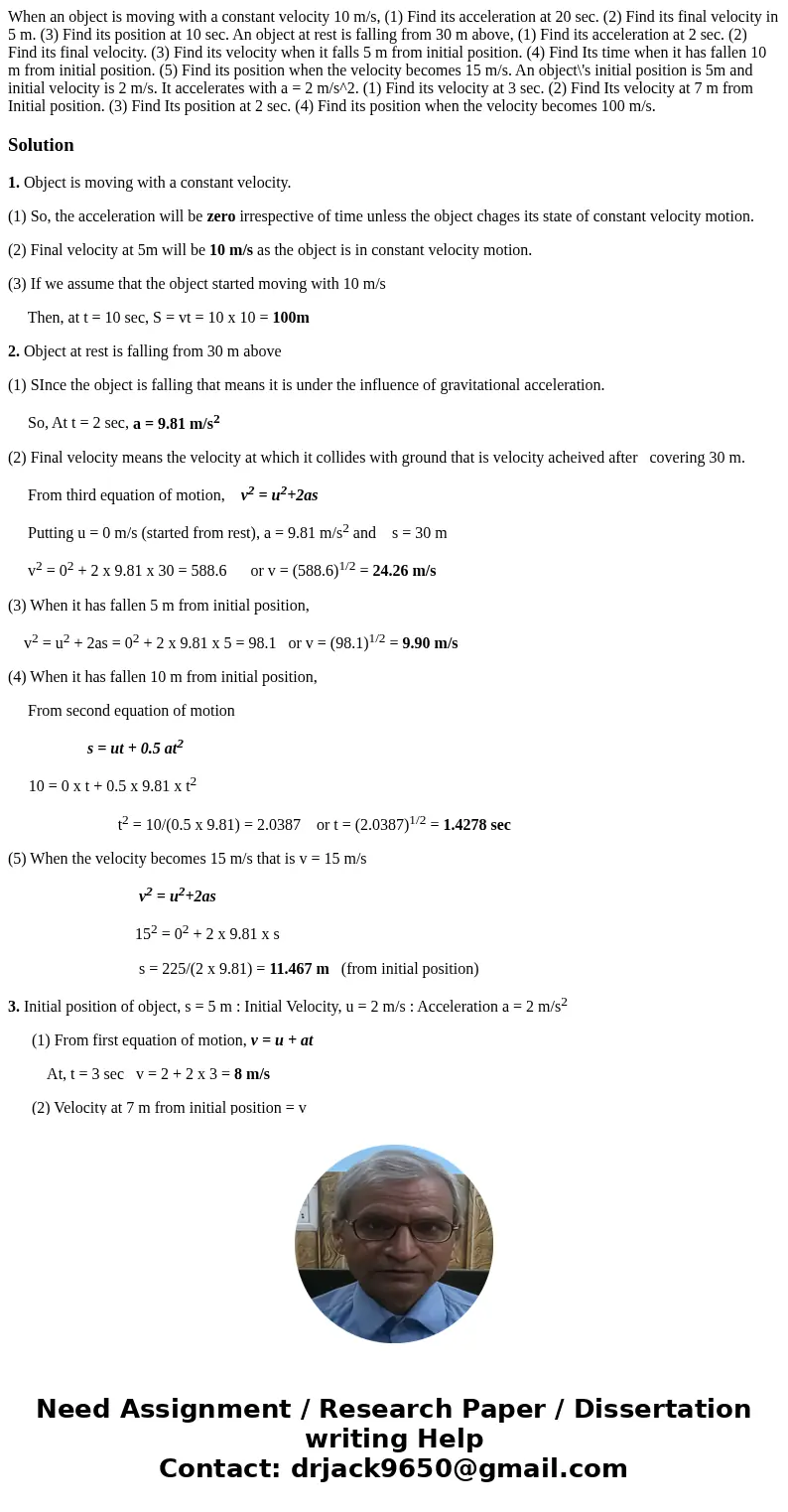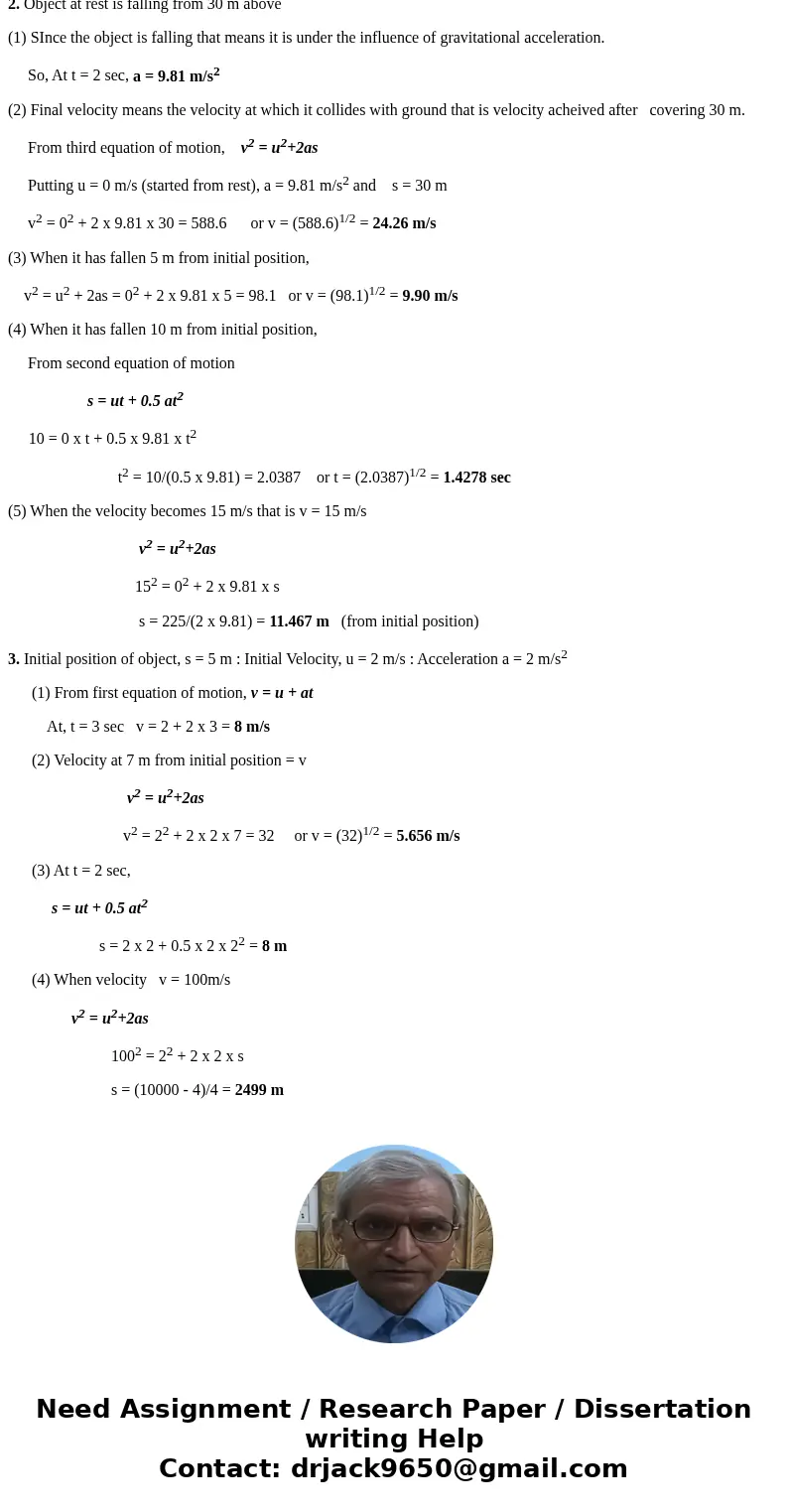When an object is moving with a constant velocity 10 ms 1 Fi
Solution
1. Object is moving with a constant velocity.
(1) So, the acceleration will be zero irrespective of time unless the object chages its state of constant velocity motion.
(2) Final velocity at 5m will be 10 m/s as the object is in constant velocity motion.
(3) If we assume that the object started moving with 10 m/s
Then, at t = 10 sec, S = vt = 10 x 10 = 100m
2. Object at rest is falling from 30 m above
(1) SInce the object is falling that means it is under the influence of gravitational acceleration.
So, At t = 2 sec, a = 9.81 m/s2
(2) Final velocity means the velocity at which it collides with ground that is velocity acheived after covering 30 m.
From third equation of motion, v2 = u2+2as
Putting u = 0 m/s (started from rest), a = 9.81 m/s2 and s = 30 m
v2 = 02 + 2 x 9.81 x 30 = 588.6 or v = (588.6)1/2 = 24.26 m/s
(3) When it has fallen 5 m from initial position,
v2 = u2 + 2as = 02 + 2 x 9.81 x 5 = 98.1 or v = (98.1)1/2 = 9.90 m/s
(4) When it has fallen 10 m from initial position,
From second equation of motion
s = ut + 0.5 at2
10 = 0 x t + 0.5 x 9.81 x t2
t2 = 10/(0.5 x 9.81) = 2.0387 or t = (2.0387)1/2 = 1.4278 sec
(5) When the velocity becomes 15 m/s that is v = 15 m/s
v2 = u2+2as
152 = 02 + 2 x 9.81 x s
s = 225/(2 x 9.81) = 11.467 m (from initial position)
3. Initial position of object, s = 5 m : Initial Velocity, u = 2 m/s : Acceleration a = 2 m/s2
(1) From first equation of motion, v = u + at
At, t = 3 sec v = 2 + 2 x 3 = 8 m/s
(2) Velocity at 7 m from initial position = v
v2 = u2+2as
v2 = 22 + 2 x 2 x 7 = 32 or v = (32)1/2 = 5.656 m/s
(3) At t = 2 sec,
s = ut + 0.5 at2
s = 2 x 2 + 0.5 x 2 x 22 = 8 m
(4) When velocity v = 100m/s
v2 = u2+2as
1002 = 22 + 2 x 2 x s
s = (10000 - 4)/4 = 2499 m


 Homework Sourse
Homework Sourse